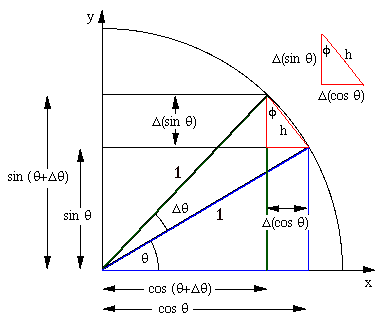I have just finished writing up full solutions to the GR1268 questions. I hope they are of some help to you!
https://drive.google.com/file/d/0B-uVGG ... sp=sharing
Great job! Thank you for the time, patience and hard work that you put into it!DMAshura wrote:Hello mathematicians!
I have just finished writing up full solutions to the GR1268 questions. I hope they are of some help to you!
https://drive.google.com/file/d/0B-uVGG ... sp=sharing

...Especially after someone has already done all the work and posted the solutions, but never during the actual exam.DMAshura wrote:Nice, Ivanjam. You've got a knack for shortcuts.
Beautiful. I love some of these simplifications, especially on #44 and #53. I'll have to incorporate some of them (and credit you for your contributions of course)! Thank you!fluentmundo wrote:I'm new to this forum and just discovered these solutions. Thanks for them. Here are some comments on other approaches, some of them significantly faster than yours or others mentioned in this thread.
For #24, no need to eliminate D before A and C. Every homogeneous system is consistent (eliminate A), and the set of solutions is a vector space, hence closed under addition (eliminate C).
For #31, you could just write a quick expression for det(A-lambda I) -- no need to simplify it fully -- and then test the given values to see whether they're roots. This might be slightly longer than your solution, but it's still quite fast.
For #44, no need to solve the ODE -- that's a time sink. Simply analyze the slope field when x<0. It helps first to look for the equilibria, where y'=0. This gives x-xy=0, so x=0 or y=1. Since y'=x(1-y) and y is initially less than 1, y' will be negative for x<0. So the solution will flow up to the equilibrium y=1 as x tends to negative infinity.
For #53, you don't need the Leibniz rule. We are told g(x) = int_0^x f(y)(y-x)dy. This is just
int_0^x yf(y)dy - x int_0^x f(y)dy
Now differentiate, using the fundamental theorem of calculus and the product rule. (Actually, now that I look at the question again, I see it does not state that f is continuous, so strictly speaking, the fundamental theorem doesn't apply, nor does Leibniz's rule. I'm not sure yet whether the test-writers simply made a mistake, or whether the problem is vastly more interesting than it seems.)
For #56, statement III asks whether there's a constant C so that |sin(x)-x|<=C|x^3| for all x. Your solution is to think geometrically. p-adic's, earlier in this thread, uses a bound for x>1 and then modifies it for x<1. But the easiest and most straightforward approach is simply to note that |sin(x)-x| is the absolute value of the remainder of the first-order Taylor approximation of sine. Since the Taylor series for sine is alternating, the absolute value of the remainder is bounded by the absolute value of the next term, |x^3/6|. This immediately gives a C, namely 1/6, that works for all values of x. The argument requires no case analysis.
For #57, statement II, you appeal to sin(1/x) as a counterexample. But the oscillatory behavior is overkill here. The function 1/x works just as well; it is continuous on (0,1) but the f(x_n) diverge to infinity.
There really isn't a "dependence on z"; rather, z is being visualized such that it depends on x and y. Think of it kind of like finding the area of the curve bounded by x=-1, x=1, y=0, and y=x+3. When you graph these functions, you see that this is just the area under the curve y=x+3, on the interval [-1,1]. Similarly, the solid being visualized for #22 is the volume under the surface z = y+3, over the region bound by y=x² and y=2-x². Does that help?tortoise47 wrote:Hey DMAshura,
#22 - how do you eliminate the dependence on z? I had a hard time visualizing a solid with the 4 equations together, much less integrating over it.
Charles Rambo has the solutions to the 2005 exam on his website for free: http://rambotutoring.com/GR0568-solutions.pdfrlightec wrote:Hello DMAshura,
I am ashamed to ask this as it requires a lot of work, but... is there any chance you can write solutions for the 2005 test? I heard that 2005 and 2012 test are quite similar to the current version of the exam whereas pre-2005 practice tests are easier and not very reflective of current administered tests.
I'll be publishing my own solutions as well soon.rlightec wrote:Hello DMAshura,
I am ashamed to ask this as it requires a lot of work, but... is there any chance you can write solutions for the 2005 test? I heard that 2005 and 2012 test are quite similar to the current version of the exam whereas pre-2005 practice tests are easier and not very reflective of current administered tests.